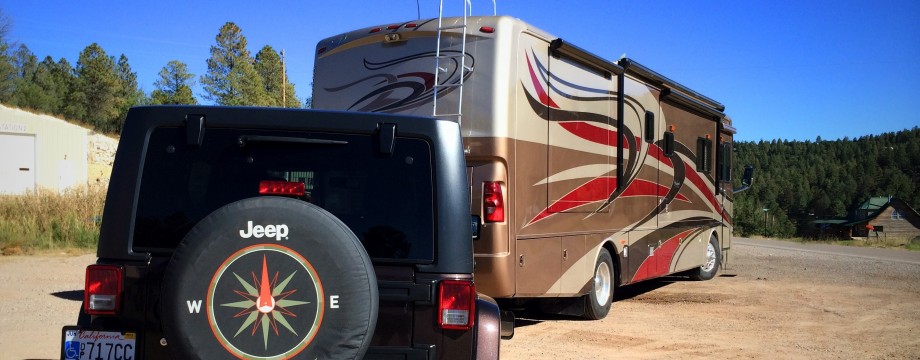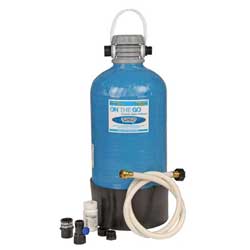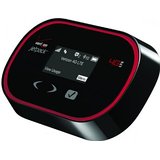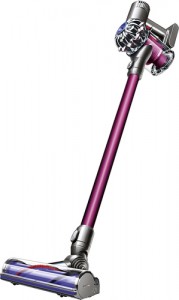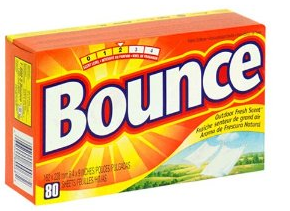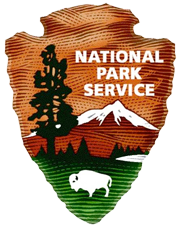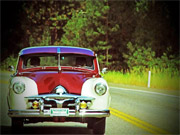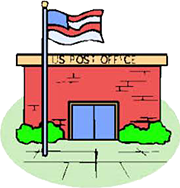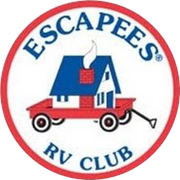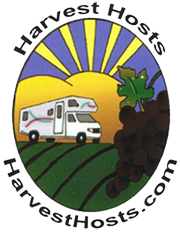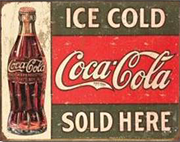MEDICAL CARE | PRIVATE CAMPGROUNDS | PUBLIC CAMPGROUNDS | FIRST AID | PRESCRIPTION DRUGS | ON-BOARD WATER SYSTEMS | INTERNET | RECEIVING MAIL | EMERGENCY NUMBERS | GPS | TRIP AND ROUTE PLANNING | DOCUMENT STORAGE | DOWNSIZING | CASH | RV DRIVING SCHOOL | “ONE NIGHT STANDS.” | RV REPAIRS | WASH YOUR RIG | KEEP IT CLEAN INSIDE | IMPORTANCE OF A HOBBY | WINDSHIELD BUG REMOVAL | SILVER SNEAKERS | BULLETIN BOARD | DIAMOND SHIELD | RV BUG SCREENS | TAKE YOUR TIME
 THESE TRAVEL TIPS come from our motor-home travel experience before and during this Adventure. If the order in which they’re given seems illogical and “out of order,” that’s because it is. I’ve just been adding tips as I think of them or learn them on the road. (Some rainy day I’ll re-order them.) Most will perhaps seem obvious, but we think they are worth mentioning as they may save you time, money and grief. In an emergency or during a stressful moment, even “the obvious” doesn’t always occur to us. Two points are worth mentioning at the outset. First, while not irrelevant to the weekend and summer vacation motor-home owner, these tips are primarily directed at those who travel either full-time or at least for extended trips. We were recreational RV’ers for many years and never really needed much of the information I’ve included here. Second, unlike so many RV blogs, I am not offering any suggestions about all things mechanical. If you’re looking for help on a plumbing or electrical issue, this is not the place to look. Either check with Florence or find another source of information. (As you’ll soon conclude if you’ve not already done so, Florence handles the mechanics and I do the cooking. It’s not a typical arrangement, but it works for us.) I’m about as successful with mechanical issues as is an orthopedic surgeon working on a jellyfish! These tips are travel tips, not maintenance or repair tips. And, before starting to read, keep in mind that RV’ers you’ll meet on the road have a wealth of experience and information they’re happy to share. “We’re all in the same boat.” We’ve got lots in common. Introduce yourself. Make friends on the road. Ask questions. Listen. Learn. Pass it on. FINAL NOTE: I initially wrote many of these tips during the first six months of our travels. More than two years into our Adventure, some of my opinions have changed. Rather than re-write a tip that I now wish to modify, I’ve added an update to it. By doing this, you can read the entire tip and get the benefit of my thinking “then and now.”
THESE TRAVEL TIPS come from our motor-home travel experience before and during this Adventure. If the order in which they’re given seems illogical and “out of order,” that’s because it is. I’ve just been adding tips as I think of them or learn them on the road. (Some rainy day I’ll re-order them.) Most will perhaps seem obvious, but we think they are worth mentioning as they may save you time, money and grief. In an emergency or during a stressful moment, even “the obvious” doesn’t always occur to us. Two points are worth mentioning at the outset. First, while not irrelevant to the weekend and summer vacation motor-home owner, these tips are primarily directed at those who travel either full-time or at least for extended trips. We were recreational RV’ers for many years and never really needed much of the information I’ve included here. Second, unlike so many RV blogs, I am not offering any suggestions about all things mechanical. If you’re looking for help on a plumbing or electrical issue, this is not the place to look. Either check with Florence or find another source of information. (As you’ll soon conclude if you’ve not already done so, Florence handles the mechanics and I do the cooking. It’s not a typical arrangement, but it works for us.) I’m about as successful with mechanical issues as is an orthopedic surgeon working on a jellyfish! These tips are travel tips, not maintenance or repair tips. And, before starting to read, keep in mind that RV’ers you’ll meet on the road have a wealth of experience and information they’re happy to share. “We’re all in the same boat.” We’ve got lots in common. Introduce yourself. Make friends on the road. Ask questions. Listen. Learn. Pass it on. FINAL NOTE: I initially wrote many of these tips during the first six months of our travels. More than two years into our Adventure, some of my opinions have changed. Rather than re-write a tip that I now wish to modify, I’ve added an update to it. By doing this, you can read the entire tip and get the benefit of my thinking “then and now.”
BUT FIRST, JOIN THE ESCAPEES RV TRAVEL CLUB: Ecapees RV Club is a 32,000 member-strong organization devoted to full-time RVing. (www.escapees.com). In addition to members, there are more than 150 employees and thousands of volunteers devoted to nothing but providing information to full timers. 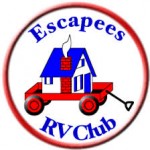 Since beginning our Journey, we have had lots and lots of questions. And some of them…well, nobody seemed to have any answers. Here’s what we discovered. The Escapees Forums are an absolutely invaluable source of information, regardless of the topic and regardless of how complex or how simple is the question. Posting a question on a forum there is like sitting in a room full of experienced full timers and asking the question: You get answers, opinions, suggestions, cross-talk, debate…every thought and answer one could imagine, coming from folks with hundreds of years of collective motor-home experience! I’ve gotten advice about topics ranging from satellite dishes to re-seating a Class A windshield to eliminate road-whistle-noise. You’ll be amazed at the wealth of information which is available almost instantly at your fingertips!
Since beginning our Journey, we have had lots and lots of questions. And some of them…well, nobody seemed to have any answers. Here’s what we discovered. The Escapees Forums are an absolutely invaluable source of information, regardless of the topic and regardless of how complex or how simple is the question. Posting a question on a forum there is like sitting in a room full of experienced full timers and asking the question: You get answers, opinions, suggestions, cross-talk, debate…every thought and answer one could imagine, coming from folks with hundreds of years of collective motor-home experience! I’ve gotten advice about topics ranging from satellite dishes to re-seating a Class A windshield to eliminate road-whistle-noise. You’ll be amazed at the wealth of information which is available almost instantly at your fingertips!
AND THEN, TAKE A LOOK AT EVERYTHING-ABOUT-RVING.COM This is a really good “all-purpose” website…lots of ways to research almost every topic, learn about new products and services and get tips on everything else RV-related. Gas or diesel? Tips on purchasing. Used RV inspection. It’s all here…you get the idea.
NOW, YOU’RE READY TO TAKE A LOOK AT MY OWN SPECIFIC TIPS AND SUGGESTIONS…
1. MEDICAL CARE ON THE ROAD: In hindsight, this tip is obvious. However, perhaps it’s so obvious that you might overlook it. The tip: When in need of immediate medical attention, see if you can locate an Urgent Care Center in the area. At one of these facilities, one can be seen promptly by a licensed physician. X-ray equipment is usually available, broken bones can be set and casts installed. Wounds can be sutured, medication dispensed and referrals to competent specialists are available. The alternative for getting “prompt” medical attention is of course the local hospital Emergency Room. Have you visited one of these facilities lately? You can easily wait four or five hours to be seen and the time available for attention to your problem is far more limited that at an Urgent Care Facility. So, for a fee usually less than that charged at the hospital and with insurance coverage equally accepted and with fast and complete attention, try the Urgent Care Facility.
medical attention, see if you can locate an Urgent Care Center in the area. At one of these facilities, one can be seen promptly by a licensed physician. X-ray equipment is usually available, broken bones can be set and casts installed. Wounds can be sutured, medication dispensed and referrals to competent specialists are available. The alternative for getting “prompt” medical attention is of course the local hospital Emergency Room. Have you visited one of these facilities lately? You can easily wait four or five hours to be seen and the time available for attention to your problem is far more limited that at an Urgent Care Facility. So, for a fee usually less than that charged at the hospital and with insurance coverage equally accepted and with fast and complete attention, try the Urgent Care Facility.
2. PRIVATE CAMPGROUNDS: Most full-time RVers will want to purchase affiliate camping memberships to avoid whenever possible  paying full camping fees at privately owned RV resorts across the country. The cost of some of these memberships is nominal, but others are quite costly. Some as much as several thousand dollars. However, if you amortize a two thousand dollar investment by calculating the savings on full price nightly fees of $60.00, for example, you can see how quickly the memberships pay for themselves! We purchased Adventure Outdoor Resorts (AOR), Resort Parks International (RPI Preferred), Coast to Coast Deluxe, Resorts of Distinction (ROD Plus), Good Sam, Escapees, Passport America and Kampgrounds of America (KOA). In order to acquire any of these affiliate memberships, one must also have purchased an interest in a “home park.” We chose Southern Trails in Georgia, not because we plan any significant amount of time there but because it was a less expensive way to acquire the memberships listed. Deciding on how to buy these memberships, taking into account the route of one’s journey and other factors is a challenging task. Research your options thoroughly. UPDATE. We spent a significant amount of money…several thousands of dollars..purchasing affiliate camping memberships. Two years into our Adventure, we’re beginning to conclude that we made a mistake in doing so. We’re simply not using these “pre-paid fees” enough to have made the investment a sound one. And many of the RV parks where our affiliate memberships give us a deep discount aren’t up to our standards. Another note: You simply cannot rely on the photos you see on RV park websites. Most show lots of photos of the clubhouse, exercise room and swimming pool…very few of the actual RV sites. And often the site photos are completely unrepresentative of most in the park. Read the reviews on Trip Advisor and other sites and talk to other RV’ers in order to avoid disappointment as much as possible.
paying full camping fees at privately owned RV resorts across the country. The cost of some of these memberships is nominal, but others are quite costly. Some as much as several thousand dollars. However, if you amortize a two thousand dollar investment by calculating the savings on full price nightly fees of $60.00, for example, you can see how quickly the memberships pay for themselves! We purchased Adventure Outdoor Resorts (AOR), Resort Parks International (RPI Preferred), Coast to Coast Deluxe, Resorts of Distinction (ROD Plus), Good Sam, Escapees, Passport America and Kampgrounds of America (KOA). In order to acquire any of these affiliate memberships, one must also have purchased an interest in a “home park.” We chose Southern Trails in Georgia, not because we plan any significant amount of time there but because it was a less expensive way to acquire the memberships listed. Deciding on how to buy these memberships, taking into account the route of one’s journey and other factors is a challenging task. Research your options thoroughly. UPDATE. We spent a significant amount of money…several thousands of dollars..purchasing affiliate camping memberships. Two years into our Adventure, we’re beginning to conclude that we made a mistake in doing so. We’re simply not using these “pre-paid fees” enough to have made the investment a sound one. And many of the RV parks where our affiliate memberships give us a deep discount aren’t up to our standards. Another note: You simply cannot rely on the photos you see on RV park websites. Most show lots of photos of the clubhouse, exercise room and swimming pool…very few of the actual RV sites. And often the site photos are completely unrepresentative of most in the park. Read the reviews on Trip Advisor and other sites and talk to other RV’ers in order to avoid disappointment as much as possible.
3. PUBLIC CAMPGROUNDS: As a prelude to this topic, remember that if you are driving a big rig, you’re not going to fit into 90% of public campgrounds. You’ll just be too big…to long in particular. Think twice about where you’ll be staying if you’re traveling in an RV longer than about 34 feet. Of course there are exceptions, but not one heck of a lot of them. Now, remember that none of the affiliate memberships apply to public campgrounds: National, state and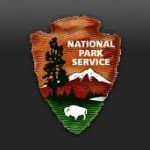 county spots. If staying in these kinds of campgrounds is what you like, and who doesn’t…many are spectacular, you must take a look at the following website when planning your travels: www.uscampgrounds.info. It is the most comprehensive and geographically accurate guide to Federal, State, Provincial and Local campgrounds available anywhere. Included are all national parks, state and provincial campgrounds, all BLM, TVA and Army engineers and military-only as well as all county, city and utility-owned campgrounds. Listed and described are 12,000 public campgrounds…the entire US and Canada. There are interactive street and topo maps as well as downloadable data files for GPS or laptop mapping software. You can even print a complete campground map. When they exist, links to the campground websites are provided. Another feature about this site is that no attempt has been made to include every single campground or area as some “guides” do. They include even the ones that won’t interest you such as pack-in, boat-in or horseback ride-in spots. You can email the webmaster with questions or advice. These guys have done it all…they even have an “app” for Apple, Android and other mobile phones and tablets. There is also a detailed and comprehensive list of other RV camping directories and websites which you may find helpful. Don’t miss this one! And finally, keep in mind that there are senior and disability discount passes, some annual and others lifetime, for all of the public campgrounds. The discounts are substantial, frequently entitling you to a 50% camping discount. Take advantage of them.IMPORTANT UPDATE: It’s been years since I wrote this “tip” about public campgrounds. It’s now August of 2017 and we’re on the last leg of our Adventure, headed toward the state of Oregon which will become our permanent home. And surprisingly and regrettably we’ve made a significant “discovery” in the last few months which I want to pass along. Specifically, be sure to search for Army Corps of Engineers Campgrounds (CoE). They are spectacular, almost always on a large lake, mostly with full hookups and priced very reasonably. For years, we assumed that CoE parks would be like Bureau of Land Management (BLM) areas: places with almost no amenities or hookups. How wrong we were! I can’t stress how important is this update: we could easily have saved thousands of dollars and stayed in spectacular sposts all across the country had we paid attention to these CoE spots, which truly are national treasures. Take a look at my post about the Gunter Hill campground outside Montgomery, Alabama. Also, Defeated Creek campground in Tennessee and Hurricane Creek in the Land Between the Lakes area of Kentucky. After looking at these spots, you’ll be convinced of how much your own adventure will be enhanced when you make it a point to stay at CoE campgrounds. Believe it or not, with our Senior National Park Pass, we’ve stayed in these parks at a nightly cost of between ten and twenty dollars! Enjoy! ANOTHER IMPORTANT UPDATE. I’ve known for years that many military installations have RV campgrounds, for the exclusive use of military personnel. What I didn’t know until recently is that getting authorization for use is not as stringent a requirement as I’d believed. Specifically, even if your military service is or was in the reserves or National Guard, if you have a DD-14 discharge document you can use it to obtain a military ID card that will give you permission to use these military facilities. (I’ve always supported our troops, no matter what. But when I was in college during the Vietnam conflict I joined the National Guard to avoid getting drafted and being sent to the jungles. I spent six months on active duty and thereafter two weeks each summer and one weekend each month for six subsequent years. I’m now told that’s enough for me to have gotten a military ID.
county spots. If staying in these kinds of campgrounds is what you like, and who doesn’t…many are spectacular, you must take a look at the following website when planning your travels: www.uscampgrounds.info. It is the most comprehensive and geographically accurate guide to Federal, State, Provincial and Local campgrounds available anywhere. Included are all national parks, state and provincial campgrounds, all BLM, TVA and Army engineers and military-only as well as all county, city and utility-owned campgrounds. Listed and described are 12,000 public campgrounds…the entire US and Canada. There are interactive street and topo maps as well as downloadable data files for GPS or laptop mapping software. You can even print a complete campground map. When they exist, links to the campground websites are provided. Another feature about this site is that no attempt has been made to include every single campground or area as some “guides” do. They include even the ones that won’t interest you such as pack-in, boat-in or horseback ride-in spots. You can email the webmaster with questions or advice. These guys have done it all…they even have an “app” for Apple, Android and other mobile phones and tablets. There is also a detailed and comprehensive list of other RV camping directories and websites which you may find helpful. Don’t miss this one! And finally, keep in mind that there are senior and disability discount passes, some annual and others lifetime, for all of the public campgrounds. The discounts are substantial, frequently entitling you to a 50% camping discount. Take advantage of them.IMPORTANT UPDATE: It’s been years since I wrote this “tip” about public campgrounds. It’s now August of 2017 and we’re on the last leg of our Adventure, headed toward the state of Oregon which will become our permanent home. And surprisingly and regrettably we’ve made a significant “discovery” in the last few months which I want to pass along. Specifically, be sure to search for Army Corps of Engineers Campgrounds (CoE). They are spectacular, almost always on a large lake, mostly with full hookups and priced very reasonably. For years, we assumed that CoE parks would be like Bureau of Land Management (BLM) areas: places with almost no amenities or hookups. How wrong we were! I can’t stress how important is this update: we could easily have saved thousands of dollars and stayed in spectacular sposts all across the country had we paid attention to these CoE spots, which truly are national treasures. Take a look at my post about the Gunter Hill campground outside Montgomery, Alabama. Also, Defeated Creek campground in Tennessee and Hurricane Creek in the Land Between the Lakes area of Kentucky. After looking at these spots, you’ll be convinced of how much your own adventure will be enhanced when you make it a point to stay at CoE campgrounds. Believe it or not, with our Senior National Park Pass, we’ve stayed in these parks at a nightly cost of between ten and twenty dollars! Enjoy! ANOTHER IMPORTANT UPDATE. I’ve known for years that many military installations have RV campgrounds, for the exclusive use of military personnel. What I didn’t know until recently is that getting authorization for use is not as stringent a requirement as I’d believed. Specifically, even if your military service is or was in the reserves or National Guard, if you have a DD-14 discharge document you can use it to obtain a military ID card that will give you permission to use these military facilities. (I’ve always supported our troops, no matter what. But when I was in college during the Vietnam conflict I joined the National Guard to avoid getting drafted and being sent to the jungles. I spent six months on active duty and thereafter two weeks each summer and one weekend each month for six subsequent years. I’m now told that’s enough for me to have gotten a military ID.
4. FIRST AID KIT AND CPR TRAINING: CPR training makes good sense for lots of reasons anytime and anywhere. Before departing for a long trip intended to take 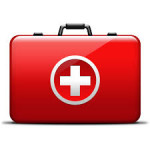 you into desolate places, however, it’s mandatory. So is First Aid training. The Red Cross gives classes all the time in lots of locations. Enough said. “Don’t leave home without it.” It’s also obvious that having a first aid kit aboard is a good idea. That’s only part of the story. It’s not just a good idea, it’s the only responsible way to go, not just for personal use but perhaps as needed to assist others along the way. A little Target store purchased first aid kit doesn’t cut it. A few band aids won’t help much in a serious situation. I bought a small duffel bag and stocked it with some heavy-duty first aid items. Again, the Red Cross is a good source for suggestions about what should be contained in your kit. I’m as ready as one could be under the circumstances for any medical emergency. I keep the bag readily available as well, and not stored in the farthest corner of one of the basement shelves. When we’re camping I often mention to our neighbors that I have a substantial kit aboard, and in fact I frequently leave it outside and accessible for others in my absence.
you into desolate places, however, it’s mandatory. So is First Aid training. The Red Cross gives classes all the time in lots of locations. Enough said. “Don’t leave home without it.” It’s also obvious that having a first aid kit aboard is a good idea. That’s only part of the story. It’s not just a good idea, it’s the only responsible way to go, not just for personal use but perhaps as needed to assist others along the way. A little Target store purchased first aid kit doesn’t cut it. A few band aids won’t help much in a serious situation. I bought a small duffel bag and stocked it with some heavy-duty first aid items. Again, the Red Cross is a good source for suggestions about what should be contained in your kit. I’m as ready as one could be under the circumstances for any medical emergency. I keep the bag readily available as well, and not stored in the farthest corner of one of the basement shelves. When we’re camping I often mention to our neighbors that I have a substantial kit aboard, and in fact I frequently leave it outside and accessible for others in my absence.
5. PRESCRIPTION DRUGS: Having an ongoing supply of your prescription drugs is of course mandatory, but how do you accomplish it when you’re traveling from one spot  to the next? First, before you leave home, ask your doctor to prescribe six month supplies of your meds. This will save you countless monthly trips to a pharmacy along the way. Now,you can always have the pharmacy at your current location call and have transferred your prescription from the past location, but that’s cumbersome and time consuming. Although I’d never used their pharmacy before departing on this adventure, I made sure that all of our Rx were placed with Wal-mart. That makes getting refills along the way a snap as of course each Wal-mart store is electronically connected to all the others. We considered other stores, but concluded that like it or not, we’d never be too far from a Wal-mart. And as an aside, a tip about non-prescription medications. As with some of my other tips in this section, this will perhaps as you read it seem so obvious that you need not even think about it. Wrong, at least in our experience. The pointer is this. Take a look in your bathroom at home and think about all the non-prescription “meds” and other health-related items you use, even if only occasionally. Pepto-Bismol, Advil, Imodium, Neosporin, band-aids, tweezers…the list goes on and on. Again, take a while and really think this through. More than once, early in our motor-home travel we’d be in some remote location and need one of these items. Not a big deal, but it’s sure nice now for us that we don’t ever lack for having these types of items with us.
to the next? First, before you leave home, ask your doctor to prescribe six month supplies of your meds. This will save you countless monthly trips to a pharmacy along the way. Now,you can always have the pharmacy at your current location call and have transferred your prescription from the past location, but that’s cumbersome and time consuming. Although I’d never used their pharmacy before departing on this adventure, I made sure that all of our Rx were placed with Wal-mart. That makes getting refills along the way a snap as of course each Wal-mart store is electronically connected to all the others. We considered other stores, but concluded that like it or not, we’d never be too far from a Wal-mart. And as an aside, a tip about non-prescription medications. As with some of my other tips in this section, this will perhaps as you read it seem so obvious that you need not even think about it. Wrong, at least in our experience. The pointer is this. Take a look in your bathroom at home and think about all the non-prescription “meds” and other health-related items you use, even if only occasionally. Pepto-Bismol, Advil, Imodium, Neosporin, band-aids, tweezers…the list goes on and on. Again, take a while and really think this through. More than once, early in our motor-home travel we’d be in some remote location and need one of these items. Not a big deal, but it’s sure nice now for us that we don’t ever lack for having these types of items with us.
6. ON-BOARD WATER SYSTEMS: We’ve had RV’s for years. Our Diplomat is the third one. We’ve always had a special drinking water  faucet on the kitchen sink, but were skeptical about using it for consumption. Consequently, we’ve been lugging 5 gallon bottles of drinking water with us wherever we go, and filling them several times a week. They’re heavy. What a chore. We decided we were tired of this system and we’d investigate water purification systems designed for RV’s. Here’s what we learned and what we decided to do. In deciding on a system, you must first determine your needs. How much of the water in your RV do you need to filter? How clean and pure do want the finished product? As far as how much to filter: all or just a part? Do you want soft water for suds in your shower and dishwashing, or is your requirement just dealing with drinking and cooking? In short you can spend as little as about a hundred dollars or as much as several thousand dollars. After much debate and consideration, we decided that our primary goal was to have clean and tasty drinking water. So, we have a filter outside at the water source and a two stage under-the-sink filter system where our drinking faucet resides. These filters are relatively inexpensive and provide acceptably clean drinking water. There are lots of companies that offer these systems. We chose the RV Water Filter Store. It’s based in Roseburg, Oregon but the owners are full time RVers who spend the winter in Yuma, Arizona. In Yuma, they offer water filtering demonstrations and of course sell and install the products they offer. They also offer on line ordering, and telephone consultations are welcomed. UPDATE. DECEMBER 2014. We recently decided we wanted additional water filtering coach-wide and soft water. After a good deal of research, we chose an “On The Go” Portable 16,000 Grain RV Water Softener. The softener provides soft water that prevents hard water & rust stains, avoids scale build-up, improves taste and odor, increases lifespan of appliances and will also improve rough dry skin while increasing lathering of soaps. It’s a little pricey (about $300.00) and a bit heavy/bulky (36 pounds), but we now have water that’s always well filtered, tasty and delightfully soft. My suggestion is that you carefully define and consider your on board water needs before making what is usually a rather expensive purchase. A good place to begin your research is online at the RV Water Filter Store. There you will find a wealth of information and, as I mentioned above, you can arrange a telephone consultation with the owner. Good luck. This is a rather complex and complicated consideration, but one that in my view is essential because relying on the water you find during your travels is really not an acceptable choice.
faucet on the kitchen sink, but were skeptical about using it for consumption. Consequently, we’ve been lugging 5 gallon bottles of drinking water with us wherever we go, and filling them several times a week. They’re heavy. What a chore. We decided we were tired of this system and we’d investigate water purification systems designed for RV’s. Here’s what we learned and what we decided to do. In deciding on a system, you must first determine your needs. How much of the water in your RV do you need to filter? How clean and pure do want the finished product? As far as how much to filter: all or just a part? Do you want soft water for suds in your shower and dishwashing, or is your requirement just dealing with drinking and cooking? In short you can spend as little as about a hundred dollars or as much as several thousand dollars. After much debate and consideration, we decided that our primary goal was to have clean and tasty drinking water. So, we have a filter outside at the water source and a two stage under-the-sink filter system where our drinking faucet resides. These filters are relatively inexpensive and provide acceptably clean drinking water. There are lots of companies that offer these systems. We chose the RV Water Filter Store. It’s based in Roseburg, Oregon but the owners are full time RVers who spend the winter in Yuma, Arizona. In Yuma, they offer water filtering demonstrations and of course sell and install the products they offer. They also offer on line ordering, and telephone consultations are welcomed. UPDATE. DECEMBER 2014. We recently decided we wanted additional water filtering coach-wide and soft water. After a good deal of research, we chose an “On The Go” Portable 16,000 Grain RV Water Softener. The softener provides soft water that prevents hard water & rust stains, avoids scale build-up, improves taste and odor, increases lifespan of appliances and will also improve rough dry skin while increasing lathering of soaps. It’s a little pricey (about $300.00) and a bit heavy/bulky (36 pounds), but we now have water that’s always well filtered, tasty and delightfully soft. My suggestion is that you carefully define and consider your on board water needs before making what is usually a rather expensive purchase. A good place to begin your research is online at the RV Water Filter Store. There you will find a wealth of information and, as I mentioned above, you can arrange a telephone consultation with the owner. Good luck. This is a rather complex and complicated consideration, but one that in my view is essential because relying on the water you find during your travels is really not an acceptable choice.
7. INTERNET ACCESS: We have three primary internet access devices in our motorhome. Two of them provide us personal access almost anywhere we are located and the other boosts any local WiFi service provided by a park or a nearby business such as a Starbucks store. These devices are from Autonet, Verizon and WiFi Ranger, respectively. A fourth access mechanism is using the hotspot on our iPhones. And, on occasion at a really high-end park, a DSL connection will sometimes be available. Most of the park’s WiFi isn’t very good, but more and more parks offer it and sometimes we get lucky. No matter what, getting an a decent internet connection on the road is rather expensive, but it’s almost always possible to connect in one way or another. Here’s some detail:
WiFi service provided by a park or a nearby business such as a Starbucks store. These devices are from Autonet, Verizon and WiFi Ranger, respectively. A fourth access mechanism is using the hotspot on our iPhones. And, on occasion at a really high-end park, a DSL connection will sometimes be available. Most of the park’s WiFi isn’t very good, but more and more parks offer it and sometimes we get lucky. No matter what, getting an a decent internet connection on the road is rather expensive, but it’s almost always possible to connect in one way or another. Here’s some detail:
AUTONET MOBILE ROUTER. (autonetmobile.com) After lots of research Florence chose the Autonet Mobile Wireless Router as our primary internet source. We have been very happy with the device and the customer service. We are almost never without internet access. Autonet is a portable wireless router and docking station which provides wireless internet service directly to our RV. The docking station allows us to easily move it from one vehicle to another, in our case from the motor-home to our Jeep. With additional docking stations we could easily add internet connections to additional vehicles or to static locations without having to add another subscription. With expandable on board memory, we can store files and share files, music and movies, all in our RV. We strongly recommend that you investigate this device. The price is reasonable, the service is consistently good and reliable and the tech support is fantastic. One caveat applies, however, no matter what portable internet device is selected. Each sells only a specific amount of data per month, even with maximum upgrades. Consequently, we always use park-provided WiFi or do our browsing at a Starbucks location when convenient. We like to “keep Autonet data-money in the bank,” for times when we have no alternative.
UPDATE. 08-2015. VERIZON MiFi JETPACK MOBILE HOTSPOT. This device pretty much has replaced our Autonet router. The wireless Jetpack is about the size of a pack of chewing gum, affords reliable 4G LTE service (better, we’ve found, than Autonet), only costs about $50 and has several data pricing options with no contract required. For example, I just purchased 10Gigs, available to me for 60 days, for $100. And I can purchase more anytime I wish…I don’t have to wait until the 60 day “term” expires. Here’s the device description from Amazon:
The device provides up to 8 hours of continuous battery life, easily stores in a backpack, purse or briefcase, keeps tabs on your data usage, safeguards your data and displays signal and battery strength. It provides fast 4G LTE service. I absolutely love this thing! With it and the Wi Fi Ranger, I’m good to go everywhere and (although it can get pricey) I never run out of data!
WI FI RANGER SKY SIGNAL BOOSTER. (wifiranger.com). Our secondary source for internet service is park or store-provided wi fi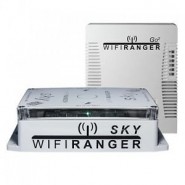 . We have enhanced our ability to utilize these wi fi options by purchasing a WiFi Ranger. It’s a device we attached to our local TV channel bat-wing antenna. It seamlessly repeats and strengthens any accessible WiFi signal, allowing it to blast past large downloads, stream videos and browse the web unimpeded by a low signal. It’s designed to withstand the rigors of outdoor travel and it was easy to permanently secure to our RV. We have been pleased with this piece of equipment, also. In parks where the wifi is weak or where your parking spot is geographically distant from the wifi tower, the Ranger “brings it in” and gives us a good connection. For about $700, this piece of gear turns what is often almost worthless RV park WiFi into almost a blazing fast connection. It’s really super!
. We have enhanced our ability to utilize these wi fi options by purchasing a WiFi Ranger. It’s a device we attached to our local TV channel bat-wing antenna. It seamlessly repeats and strengthens any accessible WiFi signal, allowing it to blast past large downloads, stream videos and browse the web unimpeded by a low signal. It’s designed to withstand the rigors of outdoor travel and it was easy to permanently secure to our RV. We have been pleased with this piece of equipment, also. In parks where the wifi is weak or where your parking spot is geographically distant from the wifi tower, the Ranger “brings it in” and gives us a good connection. For about $700, this piece of gear turns what is often almost worthless RV park WiFi into almost a blazing fast connection. It’s really super!
THE BOTTOM LINE: Get both the Verizon Jetpack and the Wi Fi Ranger. Use the park’s wifi when available. And use the hotspot on your iPhone if it works…it’s less expensive than loading “time” on your Jetpack.
UPDATE SEPTEMBER 9, 2022: My friend David Ruyle, Jr, now an RV’er himself, passed along to me the following updated information about cell phone signal and wifi options:
Cell Phone Signal Booster (We have SureCall Fusion2Go) Added with a smart tv you no longer need a wi-fi signal booster, cable hooked up, satelite or a wifi router. Why? You simply cast your cell phone screen to a smart tv. Most cable providers, we have Cox, provide free streaming of channels like they are at home to their customers.
https://www.surecallsignalbooster.com/vehicle-boosters/rvs-large-vehicles.html
8. LEGAL ADDRESS. MAILING ADDRESS. AND GETTING YOUR MAIL. Three separate topics. Having an address isn’t as simple as it was before you decided to hit the road. Now you have three considerations. You need a legal address. You need a mailing address. And you must decide how you will actually get your mail on the road. First let’s examine the legal address requirement. There are as many opinions about picking a legal address as there are full-timers on the road. First, understand that 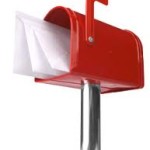 having a legal address is mandatory. You can’t legally just “be on the road.” The IRS, Department of Motor Vehicles, insurance carriers and Registrar of Voters all require you to have a physical, legal address. Tax considerations come into play, as well. Research it. Second, you need a mailing address, and it need not be the same as your legal address. We’ve decided to use the same address for both legal and mailing. A friend collects and sends our mail to us. But for their mailing address, others choose a mailing service, such as the one offered by Escapees. Decide what’s best for you. Third, decide how you’ll actually get your mail while on the road. Our friend usually sends our snail-mail c/o General Delivery at a Post Office where we’re staying. But even receiving general delivery mail requires a bit of planning. Call the Post Office where you want to get your mail and find out the requirements for that specific office. The rules aren’t all the same. Some offices require you to submit a form in advance. Others don’t accept general delivery at all. Still others have quirky requirements for how your mail is to be addressed. Some accept UPS and FedEx. Others don’t. Some even charge for accepting UPS. Don’t be disappointed by assuming anything…always check with the local postal authorities. It’s a bit confusing at first, but after a while it all gets to be routine, just as so many other aspects of full-time RV travel.
having a legal address is mandatory. You can’t legally just “be on the road.” The IRS, Department of Motor Vehicles, insurance carriers and Registrar of Voters all require you to have a physical, legal address. Tax considerations come into play, as well. Research it. Second, you need a mailing address, and it need not be the same as your legal address. We’ve decided to use the same address for both legal and mailing. A friend collects and sends our mail to us. But for their mailing address, others choose a mailing service, such as the one offered by Escapees. Decide what’s best for you. Third, decide how you’ll actually get your mail while on the road. Our friend usually sends our snail-mail c/o General Delivery at a Post Office where we’re staying. But even receiving general delivery mail requires a bit of planning. Call the Post Office where you want to get your mail and find out the requirements for that specific office. The rules aren’t all the same. Some offices require you to submit a form in advance. Others don’t accept general delivery at all. Still others have quirky requirements for how your mail is to be addressed. Some accept UPS and FedEx. Others don’t. Some even charge for accepting UPS. Don’t be disappointed by assuming anything…always check with the local postal authorities. It’s a bit confusing at first, but after a while it all gets to be routine, just as so many other aspects of full-time RV travel.

Check in advance with the Post Office where you intend to receive your mail. Some don’t accept UPS or FedEx deliveries. Don’t be disappointed.
And there’s one final mail-related issue: “What about packages?” I don’t know about you and (and “no” I don’t have stock in Amazon) but I’m really an Amazon disciple! Long before we left home I had concluded that no longer was there much reason to make purchases at brick and mortar stores. Amazon, literally, sells almost every item “out there.” Not only that, the prices are more than competitive and the selection is vast. Think about it. If you drive to a store-store looking for a coffee maker, you’ll find a few on display. At Amazon, you’ll find perhaps 50 choices and as an extra bonus each has been reviewed by consumers. The information in these reviews is invaluable in deciding which item best suits your needs. Worried about returns? No problem with Amazon. With a little ingenuity, you’ll get free return shipping as well. Delivery time a concern? No problem: for a minimal annual fee to get “Prime Membership” almost every purchase is delivered 2nd day and at no charge. You can order a pallet of bricks for delivery: No shipping charge. And if you’ve already moved along when your package arrives, USPS will return it to Amazon and your charge account will automatically be credited the purchase price. Bingo! Just be certain, as mentioned above, that the post office you’re using will accept Amazon’s delivery carrier.
 9. EMERGENCY TELEPHONE NUMBERS: A word about emergency phone numbers is appropriate. Always carry a laminated card in your wallet with your medications, physicians numbers and other emergency contact numbers. Equally important, try to befriend your mechanic or RV shop owner to give you his cell number. We’ve over the years become chummy enough our San Diego RV Repair Shop owners and one of their techs that we have their personal phone numbers. We don’t abuse the privilege, but on several occasions when we’ve had a real problem in the middle of nowhere it was sure helpful to be able to reach one of these guys and get some phone guidance. Just as other RV travelers along the way are incredibly helpful, in our experience the techs and business owners are as well. They’re happy to accommodate and I think even a bit flattered that we’ve asked for a little special attention. Pay it forward. What goes around comes around. Know what I mean?
9. EMERGENCY TELEPHONE NUMBERS: A word about emergency phone numbers is appropriate. Always carry a laminated card in your wallet with your medications, physicians numbers and other emergency contact numbers. Equally important, try to befriend your mechanic or RV shop owner to give you his cell number. We’ve over the years become chummy enough our San Diego RV Repair Shop owners and one of their techs that we have their personal phone numbers. We don’t abuse the privilege, but on several occasions when we’ve had a real problem in the middle of nowhere it was sure helpful to be able to reach one of these guys and get some phone guidance. Just as other RV travelers along the way are incredibly helpful, in our experience the techs and business owners are as well. They’re happy to accommodate and I think even a bit flattered that we’ve asked for a little special attention. Pay it forward. What goes around comes around. Know what I mean?
10. GPS NAVIGATION: Rand Mc Nally RV GPS. Of all the GPS navigation products available, we believe the Rand-McNally RV GPS is the best for motor-home travel. Specifically the Rand McNally RVND 7720 RV GPS with Free Lifetime Maps.An RV adventure is more than an ordinary car trip. Which is why  you need more than your car GPS. The RV GPS was designed to meet the unique challenges of driving an RV, with award-winning routing and tools that help you plan, prepare, and enjoy the ride. Choose your vehicle from 11 different RV types, including Class A, fifth wheel, and travel trailer. The RVND accounts for propane restrictions and even right- or left-hand turn preferences. Or switch to car mode for everyday use. Free lifetime maps subscription included. Don’t settle for an ordinary GPS that will direct you to make a U Turn on a narrow two way street! You’ll never have this problemwith the Rand McNally RV GPS. UPDATE: All GPS units “fail” periodically. We’ve had in-dash units and several portable units. They all “fail” from time to time…especially near international borders and in remote areas. You’ll get conflicting voice messages: “Turn left, turn right, make a U turn,” and so forth. Don’t fret. Don’t replace the unit. Just understand that under certain conditions that’s going to happen.
you need more than your car GPS. The RV GPS was designed to meet the unique challenges of driving an RV, with award-winning routing and tools that help you plan, prepare, and enjoy the ride. Choose your vehicle from 11 different RV types, including Class A, fifth wheel, and travel trailer. The RVND accounts for propane restrictions and even right- or left-hand turn preferences. Or switch to car mode for everyday use. Free lifetime maps subscription included. Don’t settle for an ordinary GPS that will direct you to make a U Turn on a narrow two way street! You’ll never have this problemwith the Rand McNally RV GPS. UPDATE: All GPS units “fail” periodically. We’ve had in-dash units and several portable units. They all “fail” from time to time…especially near international borders and in remote areas. You’ll get conflicting voice messages: “Turn left, turn right, make a U turn,” and so forth. Don’t fret. Don’t replace the unit. Just understand that under certain conditions that’s going to happen.
11. TRIP AND ROUTE PLANNING: RV Trip Wizard. This section of my “tips” is somewhat redundant with the information contained in the Private and Public Campground sections above. However, please read it as well as the others since they really compliment each other. Florence is the navigator and trip planner. It is a lot of work and can be really frustrating taking into account all the RV trip planning tools available: books, club  brochures, videos and websites. She has concluded that RV Trip Wizard is the cream of the crop. The website is: www.rvtripwizard.com. Trying to plan a trip that truly gets the best prices staying at a combination of campgrounds is a daunting task. With Trip Wizard, a trip shows all the parks you really want to see, but all the others are still “there” and available if you wish to choose them. Darn near all of the parks are presented, not just those affiliated with a particular trip planning service.Most of the other trip planning tools list only the campgrounds affiliated with the publisher. Or, they provide you a plan only by email. Like so many other RV’ers, you probably have several types of campground memberships, so you end up using many “tools” and a lot of time planning a trip. The Wizard database includes campgrounds of all affiliations and types: Private, city, state forests, state parks and beaches, national parks, military and many other categories…all in one place.And, to make it even better, you can rank your own campground memberships in the order you prefer, such as Resorts of Distinction (ROD), Coast to Coast, AOR, Passport America, Thousand Trails, Campground America, Good Sam…all of them. The Wizard will display the top ranked icon for any site you see on the map, if you have one of their memberships. This allows you to determine which campgrounds will offer you the best discount. There are over 5,000 POI’s (points of interest) in the Wizard database. More than 17,000 campgrounds are listed, along with Sam’s Clubs, Walmart stores..(.including those that allow overnight parking), Camping World, fuel stops, rest stops, Costco locations and Casinos with parking. Road height limits and a choice of road preferences as well. The Wizard even presents about 12,000 bicycle trails, 16,000 golf courses and 8,000 pet hospitals! Check it out and have an enjoyable trip without spending weeks plowing through other online sites and bulky reference books!
brochures, videos and websites. She has concluded that RV Trip Wizard is the cream of the crop. The website is: www.rvtripwizard.com. Trying to plan a trip that truly gets the best prices staying at a combination of campgrounds is a daunting task. With Trip Wizard, a trip shows all the parks you really want to see, but all the others are still “there” and available if you wish to choose them. Darn near all of the parks are presented, not just those affiliated with a particular trip planning service.Most of the other trip planning tools list only the campgrounds affiliated with the publisher. Or, they provide you a plan only by email. Like so many other RV’ers, you probably have several types of campground memberships, so you end up using many “tools” and a lot of time planning a trip. The Wizard database includes campgrounds of all affiliations and types: Private, city, state forests, state parks and beaches, national parks, military and many other categories…all in one place.And, to make it even better, you can rank your own campground memberships in the order you prefer, such as Resorts of Distinction (ROD), Coast to Coast, AOR, Passport America, Thousand Trails, Campground America, Good Sam…all of them. The Wizard will display the top ranked icon for any site you see on the map, if you have one of their memberships. This allows you to determine which campgrounds will offer you the best discount. There are over 5,000 POI’s (points of interest) in the Wizard database. More than 17,000 campgrounds are listed, along with Sam’s Clubs, Walmart stores..(.including those that allow overnight parking), Camping World, fuel stops, rest stops, Costco locations and Casinos with parking. Road height limits and a choice of road preferences as well. The Wizard even presents about 12,000 bicycle trails, 16,000 golf courses and 8,000 pet hospitals! Check it out and have an enjoyable trip without spending weeks plowing through other online sites and bulky reference books!
12. DOCUMENT STORAGE: You won’t have your file cabinet from home. Your safe deposit box at your bank won’t be convenient, but you’ll need some of your important papers. You won’t have unlimited space aboard you motor-home to store them. What’s the solution? There are several. One is to install an on-board safe. I have two small safes (pistol size) that are large enough to hold a few valuables like pink slips and cash. Unless you have lots of storage space aboard, however, you may not want to install a safe large enough to hold all the rest. Here:s what I’ve done. The really irreplaceable papers are stowed in my small safes. Other documents: DMV, Medical insurance documents, RV records and such go into a plastic one drawer file. If those documents are destroyed or taken, I can replace them. I can index the contents. I don’t have room for all the things I kept at home such as my kids pictures and report cards from decades ago, but I do have room for the essentials. Folks also scan their documents and store them on their computers, remembering to back up the computers regularly with Carbonite or some other off-site service. I removed the washer and dryer from our unit. There would be room for a larger safe to be installed in that area. However, that storage area is so important I’ve decided (to be continued.)
unlimited space aboard you motor-home to store them. What’s the solution? There are several. One is to install an on-board safe. I have two small safes (pistol size) that are large enough to hold a few valuables like pink slips and cash. Unless you have lots of storage space aboard, however, you may not want to install a safe large enough to hold all the rest. Here:s what I’ve done. The really irreplaceable papers are stowed in my small safes. Other documents: DMV, Medical insurance documents, RV records and such go into a plastic one drawer file. If those documents are destroyed or taken, I can replace them. I can index the contents. I don’t have room for all the things I kept at home such as my kids pictures and report cards from decades ago, but I do have room for the essentials. Folks also scan their documents and store them on their computers, remembering to back up the computers regularly with Carbonite or some other off-site service. I removed the washer and dryer from our unit. There would be room for a larger safe to be installed in that area. However, that storage area is so important I’ve decided (to be continued.)
13. DOWNSIZING: I cannot stress enough how important this is! Before we took off on our extended trip, we read all the books about full timing or extended travel in your RV. Every author of every book said: “Downsize! Don’t take more than you’ll need or you will be sorry.” I thought to myself: Yes, but we’ve got a big rig and the authors of those books don’t understand how important my things are to me. Accordingly, we took off with far, far more than we quickly realized we wanted or needed. The more there is the more effort is needed to maintain it, clean it, take care of it or whatever. Clothing? I took 20 pair of shorts, 10 pair of trousers, probably  40 T shirts and…well, you get the idea. Even though we have quite a bit of room in our rig, I spent an inordinate amount of time cramming my things into our limited space. Also, the “extra items” I stored in the bins below…good Lord. We’ve been traveling for six months already and not once have I even looked at that stuff. So do take the advice you’ll read about and that I’m offering. You’ll be thrilled that you did!
40 T shirts and…well, you get the idea. Even though we have quite a bit of room in our rig, I spent an inordinate amount of time cramming my things into our limited space. Also, the “extra items” I stored in the bins below…good Lord. We’ve been traveling for six months already and not once have I even looked at that stuff. So do take the advice you’ll read about and that I’m offering. You’ll be thrilled that you did!
14. CASH: Keep some cash with you. Install a little safe…perhaps a pistol safe to store it. Lots of places won’t accept credit cards. Also, you can frequently save a lot of money fueling the RV, particularly at truck stops if you pay with cash. You don’t want to drive all day long, reach your RV Park and find out you won’t be able to stay without making a cash payment. Or, taking into account the cost of filling your monstrous fuel tank, it’s nice to save 10 or 15 cents a gallon (true) by paying cash. For obvious reasons, I don’t advise keeping lots of cash but be sure to have a small stash.
fueling the RV, particularly at truck stops if you pay with cash. You don’t want to drive all day long, reach your RV Park and find out you won’t be able to stay without making a cash payment. Or, taking into account the cost of filling your monstrous fuel tank, it’s nice to save 10 or 15 cents a gallon (true) by paying cash. For obvious reasons, I don’t advise keeping lots of cash but be sure to have a small stash.
 15. DRIVER’S ED: I know, I know, you can drive. Why bother with driving school? Let me tell you our story. We’ve had three motor-homes, spanning about a 6 year period of time. I’ve driven them many thousands of miles, backed into hundreds of campsites and never had a problem or even been stopped for a motor vehicle violation. I’ve driven at all hours of the day and night, driven through driving rain and even snow. I’ve been in LA rush-hour traffic and driven at high speeds “shoulder to shoulder” with truckers on the interstates. I’ve pulled tow vehicles and boat trailers for decades. In short, I’m a pretty experienced driver. Florence, however, until now had never driven a motor-home at all…ever. So when we began planning this long cross country adventure, it made sense for her to learn. In the event of an emergency, for example, it would be foolish for her not to be able to drive. I didn’t want to try to teach her…that experience would probably have resulted in World War III and me getting the silent treatment for months. So we decided to find a RV Driving School and have her learn from an expert. The cost for a two day 14 hour “class” in our own rig was something like $340 and only $500 for both of us, with twice the instruction time. Since the additional amount was not much, I decided to participate myself. This was a great experience for both of us! Our teacher had been a cross-country trucker for years and has been a full-time RV’er for the last 10 years. He’d previously taught almost a hundred folks “how to drive.” He was very knowledgeable and patient. Florence learned the rudiments and she’s been practicing as we move along. I learned some tricks and techniques which I find myself using every day. Florence also learned how to use hand signals and help me thread the needle into any space we want to occupy. And we both learned a lot about diesel mechanics and the specifics of our own coach. Well worth the price of admission. Google RV Driving School and you’ll find lots of options. Most schools have specific geographic locations but also instructors who will come to your location, so getting together for the instruction is not even a challenge.
15. DRIVER’S ED: I know, I know, you can drive. Why bother with driving school? Let me tell you our story. We’ve had three motor-homes, spanning about a 6 year period of time. I’ve driven them many thousands of miles, backed into hundreds of campsites and never had a problem or even been stopped for a motor vehicle violation. I’ve driven at all hours of the day and night, driven through driving rain and even snow. I’ve been in LA rush-hour traffic and driven at high speeds “shoulder to shoulder” with truckers on the interstates. I’ve pulled tow vehicles and boat trailers for decades. In short, I’m a pretty experienced driver. Florence, however, until now had never driven a motor-home at all…ever. So when we began planning this long cross country adventure, it made sense for her to learn. In the event of an emergency, for example, it would be foolish for her not to be able to drive. I didn’t want to try to teach her…that experience would probably have resulted in World War III and me getting the silent treatment for months. So we decided to find a RV Driving School and have her learn from an expert. The cost for a two day 14 hour “class” in our own rig was something like $340 and only $500 for both of us, with twice the instruction time. Since the additional amount was not much, I decided to participate myself. This was a great experience for both of us! Our teacher had been a cross-country trucker for years and has been a full-time RV’er for the last 10 years. He’d previously taught almost a hundred folks “how to drive.” He was very knowledgeable and patient. Florence learned the rudiments and she’s been practicing as we move along. I learned some tricks and techniques which I find myself using every day. Florence also learned how to use hand signals and help me thread the needle into any space we want to occupy. And we both learned a lot about diesel mechanics and the specifics of our own coach. Well worth the price of admission. Google RV Driving School and you’ll find lots of options. Most schools have specific geographic locations but also instructors who will come to your location, so getting together for the instruction is not even a challenge.

Small and lightweight…perfect for your “one night stand” at the Casino parking lot. They support 250 pounds.
 16. “ONE NIGHT STANDS.” When driving from one location to the next, it is important to have an efficient pre-departure routine as well as one for the destination. This is particularly important when you are traveling longer distances and are stopping just for the night or at a rest stop. When we began our journey, it would take us an inordinate amount of time to get ready to depart and, when we stopped for a break or for the night at a truck stop, an equally long time to “get ready again to go.” This becomes a drag real quickly. We have learned that it is important to keep at least one sofa and chair accessible at all times, as well obviously as the bed. Your RV is designed so you can access the kitchen sink, the refrigerator, the bathroom and the bed (not bedroom!) even when your slide-outs are stored and you’re driving down the road. As you’re getting ready to depart, resist the temptation to “store while you’re driving” stuff in and on these areas. If you do, it will be a “train wreck” every time you stop! Also, I located several “stick-on-pad” products I use on the bottom of plastic tubs, so I can store the tubs on counters and credenzas as we drive without worrying that they and their contents might spill all over the place! Those rubber webbed roles of shelf-paper type “stuff” you can purchase at Home Depot also work well. How you accomplish all of this will depend on the configuration of your RV, and my specific system is unimportant. What is important is that you develop one that works for you and allows you “to go” and “to stop” and “to depart” again with minimal effort and expenditure of time. Before we found a system for stowing items as we drove, I had a fit every time we stopped ’cause I couldn’t even find a place to sit or eat or sleep without rearranging everything. Accordingly, the “rest stops” weren’t very restful. Now they are. What a difference!
16. “ONE NIGHT STANDS.” When driving from one location to the next, it is important to have an efficient pre-departure routine as well as one for the destination. This is particularly important when you are traveling longer distances and are stopping just for the night or at a rest stop. When we began our journey, it would take us an inordinate amount of time to get ready to depart and, when we stopped for a break or for the night at a truck stop, an equally long time to “get ready again to go.” This becomes a drag real quickly. We have learned that it is important to keep at least one sofa and chair accessible at all times, as well obviously as the bed. Your RV is designed so you can access the kitchen sink, the refrigerator, the bathroom and the bed (not bedroom!) even when your slide-outs are stored and you’re driving down the road. As you’re getting ready to depart, resist the temptation to “store while you’re driving” stuff in and on these areas. If you do, it will be a “train wreck” every time you stop! Also, I located several “stick-on-pad” products I use on the bottom of plastic tubs, so I can store the tubs on counters and credenzas as we drive without worrying that they and their contents might spill all over the place! Those rubber webbed roles of shelf-paper type “stuff” you can purchase at Home Depot also work well. How you accomplish all of this will depend on the configuration of your RV, and my specific system is unimportant. What is important is that you develop one that works for you and allows you “to go” and “to stop” and “to depart” again with minimal effort and expenditure of time. Before we found a system for stowing items as we drove, I had a fit every time we stopped ’cause I couldn’t even find a place to sit or eat or sleep without rearranging everything. Accordingly, the “rest stops” weren’t very restful. Now they are. What a difference!
 Here’s another tip you’ll like: Buy a couple of tiny fold-up camp chairs to use on your short-stop overnights. You won’t want to unpack the canvas chairs or lounges you enjoy while you’re camping, but it’s sure nice to have a place to sit outside in that casino parking lot. I found these really small yet sturdy chairs that are really portable. Take a look. They support even the big boys and give you a spot for your evening cigar without completely unpacking your basement. Available through Amazon.
Here’s another tip you’ll like: Buy a couple of tiny fold-up camp chairs to use on your short-stop overnights. You won’t want to unpack the canvas chairs or lounges you enjoy while you’re camping, but it’s sure nice to have a place to sit outside in that casino parking lot. I found these really small yet sturdy chairs that are really portable. Take a look. They support even the big boys and give you a spot for your evening cigar without completely unpacking your basement. Available through Amazon.
WHERE TO STOP: So now the question is, where do you stop for that one night stand? Other than highway rest stops, your choices are basically truck stops, Indian casinos, Wal-Mart or Sam’s Club parking lots or, one of our favorites, Cracker Barrel Restaurants. They’re all free. You can find specific information about truck stops on my post dated 12-19-13. At Wal-Mart there’s the advantage of being able to buy groceries or supplies and their lots are usually lighted and security-patrolled, as well. You also won’t drop a bunch of money in slot machines or at the blackjack table, as might be the case at a casino! One final suggestion: Consider joining the Elks Club. Elks lodges all over the country have RV parking facilities that are available to members only for a very nominal contribution to the local lodge. Some are as nice as commercial RV parks, with full hookups and park-like settings. Others provide just parking spaces. But at all accommodating club locations you can rest assured that you’ll be in a safe, secure location and surrounded by good, honorable people. And food, drink and social activities are always available in the lodge. Update: When you can find one along your route, Cabela’s/Bass Pro Shops are a great choice for a one night stand…perhaps better than any of the previous ones mentioned. RV’s are always welcome, the space for parking is plentiful (and often landscaped better than many RV parks), the tempting sports supplies inside the stores are always tempting, and most have attached restaurants that serve better than average fare.
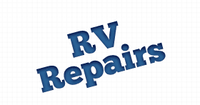
If you need RV repairs or maintenance service in San Diego, visit my friends at RV Specialists. They are the best: Honest, reliable and experienced. Click here to connect to their website.
17. REPAIR AND MAINTENANCE: You have lots of options for getting repair and maintenance. There are dealers, repair shops and mobile repairmen almost everywhere. But what about paying for those needed repairs? I strongly suggest an extended maintenance plan. Here’s why: If you own an RV and just use it on occasional weekends and for a summer vacation, repairs seem few and far between. But if you’re on the road constantly these repair issues rear their ugly heads with surprising frequency. You might put two part-time year’s worth of use on a water pump, for example, in about 4 months. Accordingly, repairs are necessary more often than you’d suspect. This seems to be the case no matter if you’re driving a million dollar Prevost coach or a ten-thousand dollar Class C that’s 20 years old. Although these plans are a bit pricey, our experience is that they have more than paid for themselves each year we’ve been covered. And in our case, keep in mind that Florence can repair lots of issues that most owners wouldn’t even touch. So, unless you’re a really talented mechanic please, please purchase one of these plans the minute your factory warranty expires. We’ve used Good Sam’s “extended service plan” and more recently the Viking “warranty protection plan” recommended by Escapees. RV repairs are costly even if infrequent, so just bite the bullet and purchase a plan. You’ll be glad you did. Tires aren’t covered under these plans, but there is an inexpensive way to get a huge discount on quality tires. Join Family Motor Coach Association and take a look at their deal with Michelean tires. The savings are significant, perhaps $1,000 on a set of tires. I’m not kidding!

Buy this stuff. Trust me. It’ll be the best $17.00 you ever spent, if you like to keep your rig looking good!
18. WASH YOUR RIG. So here’s the deal, right? You like to keep your motor-home spic ‘n span…it’s just more fun to drive when it’s all clean and shiny. But when you’re on the road full-time, it’s a challenge to get it washed. Truck washes aren’t located at every travel center along the interstate by any means. A regular car wash in town…even a do-it-yourself place with the “RV Lane” isn’t large enough for us. Going to a detail shop is great, but they charge an arm and a leg. Finally, most RV Parks won’t allow you or even an outside vendor to wash on the premises. Because of all this, I’d pretty much resigned myself to “living with” a dirty RV lots of the time. That is until I discovered a product called “Optimum No-Rinse Wash and Shine.” You need a bottle of this, trust me. It’s available on Amazon. 32 oz will only set you back about $17.00…and it’ll last you a long, long time. With this, you can easily clean the lower third of your coach (which is where it gets the dirtiest), even in places where “washing” isn’t allowed. And, with a little effort and a “sponge-on-a-stick” you can clean all but the roof, simple as can be. In a nutshell, here’s how this product works. You add 1 oz to about 2 gallons of water and gently wash the vehicle surface with a wash mitt. Then, just wipe the surface dry using a good microfiber rag. I know, you’re afraid you’ll scratch the surface. So was I. Do me a favor: Just type the name of this stuff in the little Amazon box, read the product description and then read the reviews. You’ll find about 1,000 five star ratings there, including mine and dozens from professional car detailers. Spring $17.00 bucks and give this a try. You’ll become a believer, just as I have.
For a product able to clean your RV when it’s too dirty to use “No Rinse Wash and Shine,” try Wade Maid RV and Marine Polishes, Waxes and Cleaners. I’ve got a link on the sidebar at my homepage that will take you to the website for these products. They’re good. Finally, we’ve found that truck stops which have truck washes do a pretty good job of washing our rig. The Blue Beacon chain is especially good. And they are one heck of a lot less expensive than the mobile RV wash operations available at some campsites. Certainly less than detail shops, although we usually have our motorhome detailed about twice a year. We think it’s a good investment in resale value. And it’s a lot more fun to drive a clean motorhome than a dirty one! Update: For those of you who really keep your vehicles clean, you probably know about the “clay bar” system, which produces the most lustrous finish possible. Get this: you can buy a “clay bar rag” which allows essentially the same treatment. You’ll have to Google it on Amazon or find it on a detailer’s website, but for $50 or so you can “clay bar treat” large sections far more quickly than using an actual bar.
19. KEEP IT CLEAN INSIDE. Keeping the inside of your motorhome clean is a challenge. Let’s face it, even when you’re parked on a cement slab with a patio area, dirt and leaves have a way of getting tracked inside. What’s the best vac for the task? Not your on-board vacuum…it has a big bulky hose, not much suction and it’s a nuisance dragging it front to back. Not a corded upright or canister…the cord gets in the way and it’s a chore to get the tools on and off the hose. What about a cordless electric vac? Well, that’s the answer, but until now there hasn’t been one on the market that’s up to the task. Now Dyson offers the DC 59 Motorhead Cordless Vacuum. (not to be confused with the “animal” model). Better than the Shark, Bissell and Hoover…I’ve tried ’em all. The DC 59 provides powerful cleaning across all floor surfaces and has easy-to-use attachments that will have you cleaning all the nooks and crannies in your coach with ease. This baby has so much suction it almost pulls your carpet right off the floor, re-charges quickly and is lightweight and easy to use. It can also be used as a hand vac (like the old dust busters) to clean your car or other small areas. I’ve discarded more vacs than most people own in a lifetime, and I guarantee you that the DC 59 Motorhead is the only one you’ll ever need to keep your rig looking good! With optional attachments, it will set you back about $550.00, but your rig’s interior will be looking good!
20. THE IMPORTANCE OF A HOBBY: If you’re planning on becoming a full-time RV traveler or even one who takes extended trips in your rig, it’s very  important for you to have a hobby…one compatible with being in a confined space and which doesn’t require any large or bulky equipment. As exciting as RV travel can be, there are times when because of inclement weather or other reasons you’re penned up inside for long periods of time. If you don’t have a hobby to entertain you during these times, you’ll be in trouble. You can only watch so much TV! I have lots of hobbies: I enjoy working on this website. I also enjoy cooking, reading, photography and calligraphy. I’ve recently “taken up cigars,” There’s lots to learn but of course I’d never smoke one inside our rig. I’m never at a loss for things to keep me happily occupied, no matter how long I’m confined indoors. I hear folks complain all the time, though, that they “absolutely went bananas during the last couple of days when it was constantly raining.” They wouldn’t feel that way if they had a hobby or two. A word to the wise. (Funny story, apropos to hobbies.) I met a guy at the Pechanga RV Resort in Temecula, California about a year ago. He was parked next to us and had a huge toy hauler behind his rig. No tow vehicle. “How does this guy get around?” I wondered, and “What’s inside that immense trailer?” Turns out he had a Moped inside which he used for transportation. But the funny thing to me was this…The guy had two passions: RV travel and cabinet making. So, inside the toy hauler was a fully equipped wood shop, complete with power tools including a table saw, band saw, drill press and router. I swear he had one of everything in there. Here’s an even funnier story about hobbies: Another guy I met had an even larger trailer. He told me he simply loved playing basketball…Gotcha, didn’t I?
important for you to have a hobby…one compatible with being in a confined space and which doesn’t require any large or bulky equipment. As exciting as RV travel can be, there are times when because of inclement weather or other reasons you’re penned up inside for long periods of time. If you don’t have a hobby to entertain you during these times, you’ll be in trouble. You can only watch so much TV! I have lots of hobbies: I enjoy working on this website. I also enjoy cooking, reading, photography and calligraphy. I’ve recently “taken up cigars,” There’s lots to learn but of course I’d never smoke one inside our rig. I’m never at a loss for things to keep me happily occupied, no matter how long I’m confined indoors. I hear folks complain all the time, though, that they “absolutely went bananas during the last couple of days when it was constantly raining.” They wouldn’t feel that way if they had a hobby or two. A word to the wise. (Funny story, apropos to hobbies.) I met a guy at the Pechanga RV Resort in Temecula, California about a year ago. He was parked next to us and had a huge toy hauler behind his rig. No tow vehicle. “How does this guy get around?” I wondered, and “What’s inside that immense trailer?” Turns out he had a Moped inside which he used for transportation. But the funny thing to me was this…The guy had two passions: RV travel and cabinet making. So, inside the toy hauler was a fully equipped wood shop, complete with power tools including a table saw, band saw, drill press and router. I swear he had one of everything in there. Here’s an even funnier story about hobbies: Another guy I met had an even larger trailer. He told me he simply loved playing basketball…Gotcha, didn’t I?
21. WINDSHIELD BUG REMOVAL. I can’t believe it! After owning motorhomes for the last eight years and being full-timers for the last two years on our Great American Adventure, I just learned how to effectively remove bug splatters from the windshield and the front of our bus. And from the back of those big rear view mirrors. There’s no need to use that expensive stuff you can purchase at Camping World for $10 a quart. It works fairly well, but you need lots of it to do a good job and at $10 a quart, using this stuff is a pretty expensive way to go. Here’s the trick: Use Bounce Dryer Sheets. Not Downey or some other Wal-mart brand, use Bounce sheets. For some reason, they are particularly effective. Here’s how you use them: Just wet the affected area and then wipe with the dryer sheets. One or two sheets will easily clean an entire mega-windshield. Remember, put water on the area first and then wipe with the sheet. Don’t dunk the sheet first…you’ll inadvertently rinse off the chemical ingredient that does the job. I even use these things when we stop for fuel at truck stops. I “rinse” the area with the washer-pole, then put a couple sheets over the “sponge” at the end of the pole, and start scrubbing. Voila! Aren’t you glad you read my blog? NOTE: Nothing will really work for bug removal unless you have a clean and waxed surface to start. But if you keep your RV polished and waxed, the Bounce Sheets system will definitely make your life easier.
22. SILVER SNEAKERS. For those of you on extended RV trips who left your local gym membership behind when you pulled out of the driveway, I have discovered a no-cost solution for many of you to the dilemma. And for those who never went to a gym at home, maybe you’ve that the benefit to regular exercise in a gym is no longer an option. Wrong in both cases. A Medicare Part C benefit which many of you have selected qualifies you for benefit called “Silver Sneakers.” It’s a program encouraging older adults to participate in physical activities that will help them to maintain greater control of their health. Basically, it gets you in the door “scot-free” at thousands of gym locations around the country and takes only a few minutes to join and print your universal gym membership card. It gives program members access to participating gyms all around the country that gets you in the door “scot-free.” It’s really that simple. You just suit up, show up and present your card. In you go to just as if you were a paying gym member. To see if your current Medicare plan includes the program, visit Silver Sneakers online health plan finder and take a look.
option. Wrong in both cases. A Medicare Part C benefit which many of you have selected qualifies you for benefit called “Silver Sneakers.” It’s a program encouraging older adults to participate in physical activities that will help them to maintain greater control of their health. Basically, it gets you in the door “scot-free” at thousands of gym locations around the country and takes only a few minutes to join and print your universal gym membership card. It gives program members access to participating gyms all around the country that gets you in the door “scot-free.” It’s really that simple. You just suit up, show up and present your card. In you go to just as if you were a paying gym member. To see if your current Medicare plan includes the program, visit Silver Sneakers online health plan finder and take a look.
23. BULLETIN BOARD. We’ve found it useful to have a small bulletin board attached to a wall or door inside, where we post RV park maps, lists of local restaurants or confirmation notes about parks where we’ve made advance reservations. There’s nothing more frustrating that needing the little slips of paper where you’ve jotted down this information and not being able to remember where it was put, while the check-in line at the park office gets longer and longer behind your rig as you search. Implementing this tip is easily done. But how are you going to replace the pins or thumbtacks which, as your coach bounces down the road, are likely to fall to the floor, providing a tempting treat to your pets? My wife came up with an ingenious idea and we’ve been using it ever since we had our puppy Molly join us on our journey across America. We use a product called “Scotch Fasteners” which I suppose is brought to you by the folks who make Scotch Tape. It comes in a roll and is similar  to Velcro. But instead of the “steel wool-like” Velcro material, “Scotch Fasteners” have interlocking surfaces that “snap” when pushed together. (We also use this product to attach wall art inside our motorhome.) We placed strips of the material across our bulletin board with the sticky side attached to the board. Then we cut lots of little squares of the material and affix them with the sticky side to the back of the paper we want to attach. Snap the paper on the board and it’s securely attached without using pins or tacks. Pretty neat idea, isn’t it? UPDATE, MAY 12, 2017. Just yesterday, while browsing the Amazon site to determine if there was anything I desperately needed (LOL) I found another solution to this bulletin board issue, perfect if you don’t have pets. Specifically, there are thumbtacks available with a little circle shape at the end, allowing you to insert photos and avoid having pinholes remain after you take them down. For the life of me I can’t remember where I found them so I can’t insert a picture or give you the name of these widgets, but you can find them if you fish around on the Amazon site.
to Velcro. But instead of the “steel wool-like” Velcro material, “Scotch Fasteners” have interlocking surfaces that “snap” when pushed together. (We also use this product to attach wall art inside our motorhome.) We placed strips of the material across our bulletin board with the sticky side attached to the board. Then we cut lots of little squares of the material and affix them with the sticky side to the back of the paper we want to attach. Snap the paper on the board and it’s securely attached without using pins or tacks. Pretty neat idea, isn’t it? UPDATE, MAY 12, 2017. Just yesterday, while browsing the Amazon site to determine if there was anything I desperately needed (LOL) I found another solution to this bulletin board issue, perfect if you don’t have pets. Specifically, there are thumbtacks available with a little circle shape at the end, allowing you to insert photos and avoid having pinholes remain after you take them down. For the life of me I can’t remember where I found them so I can’t insert a picture or give you the name of these widgets, but you can find them if you fish around on the Amazon site.
24. DIAMOND SHIELD. Diamond Shield is the name of a clear vinyl protective film that many RV’s have installed to protect the exterior paint, particularly on the “bra” or front-end area of the motorhome or travel-trailer. The material allows for relatively easy bug removal and theoretically protects the area most prone to weather damage. The problem is that the success and longevity of the product varies depending upon factors mostly beyond your control. Such as mildew. Take a look at the area beneath your Diamond Shield. Are there areas which look like smudges you’ve not been able to clean, even with diligent polishing and waxing? My answer to that question for the last few years has been, “Yes.” But until recently I just assumed the “smudges” were almost insignificant paint imperfections. Not so! They are actually mold and unless the shield is removed and the area is either carefully cleaned and possibly repainted, the problem will continue to worsen. Yesterday I saw a beautiful and almost new coach which had been neglected in this regard and it wasn’t a pretty sight. The owner will either drive with a very unsightly front-end paint job, take a huge beating when he sells the vehicle or has to remove the Diamond Shield. That, my friends, is pricey! And even having the shield removed and replaced will set you back about $1,500.00, exclusive of any cleaning or painting required. In sum, Diamond Shield or 3M shields are problematic. About the only way to avoid the problem altogether is to remove the shield and purchase a bra for the front end of your coach to use while driving to avoid road-hazard pitting. UPDATE: Although I’ve not tried it, there is a product one can purchase to simplify the job of removing the shield.
 25. RV BUG SCREENS: You’d be crazy not to follow this bit of advice! Please, install bug screens over the water heater, refrigerator and furnace vents on the outside of your motorhome. This is an easy and inexpensive way to eliminate the problem caused by mud daubers and other insects who are determined to invade your home on wheels. Before we learned this easy remedy we weren’t even aware that there was potentially a problem…until our water heater just wouldn’t work. We paid a mobile RV repairman $85 for a trip fee and another $75 to open the vent and remove a bunch of bugs who’d met their demise and clogged up the works. He informed us that screens were available to prevent the problem and within a half-hour we’d purchased and installed them. All three screens together cost less than $50.00. Don’t wait until it’s too late as we did.
25. RV BUG SCREENS: You’d be crazy not to follow this bit of advice! Please, install bug screens over the water heater, refrigerator and furnace vents on the outside of your motorhome. This is an easy and inexpensive way to eliminate the problem caused by mud daubers and other insects who are determined to invade your home on wheels. Before we learned this easy remedy we weren’t even aware that there was potentially a problem…until our water heater just wouldn’t work. We paid a mobile RV repairman $85 for a trip fee and another $75 to open the vent and remove a bunch of bugs who’d met their demise and clogged up the works. He informed us that screens were available to prevent the problem and within a half-hour we’d purchased and installed them. All three screens together cost less than $50.00. Don’t wait until it’s too late as we did.
26. TAKE YOUR TIME: Last but not least: Take your time! When we first started on the road we rushed like crazed animals on stampede. It took several months before we![]()
 realized none of this was necessary. In fact taking more time to enjoy our surroundings not only saved us money, but we’ve met more people, seen more local gems, created a sense of community and felt more in-tune with the journey. As I told Florence before we began this journey, “Remember: There’s no rush.” After a lifetime of being on a schedule and having only a finite amount of time for vacations and to travel, we found the “Take your time” advice difficult at first to follow. The more we “get it,” however, the better our Journey has become. And, as you’ll recall, one of my main priorities is to meet folks I call “interesting Americans” and the longer we hang-out in places and RV parks the more of these folks I’ve been able to meet. Here, I’ll introduce you to some of them: Click the “People” tab on the top menu of the home page. See, there are lots of interesting Americans for you to meet.
realized none of this was necessary. In fact taking more time to enjoy our surroundings not only saved us money, but we’ve met more people, seen more local gems, created a sense of community and felt more in-tune with the journey. As I told Florence before we began this journey, “Remember: There’s no rush.” After a lifetime of being on a schedule and having only a finite amount of time for vacations and to travel, we found the “Take your time” advice difficult at first to follow. The more we “get it,” however, the better our Journey has become. And, as you’ll recall, one of my main priorities is to meet folks I call “interesting Americans” and the longer we hang-out in places and RV parks the more of these folks I’ve been able to meet. Here, I’ll introduce you to some of them: Click the “People” tab on the top menu of the home page. See, there are lots of interesting Americans for you to meet.


